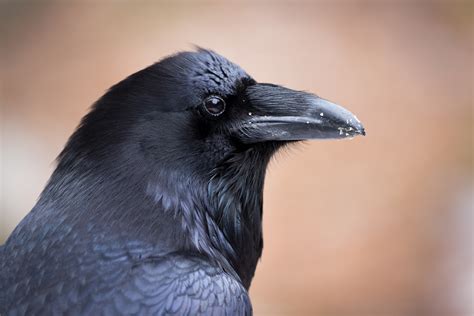Understanding the Elusive Raven and Its Black Plumage
Introduction
One of the most enigmatic and captivating birds in the world is the raven, renowned for its striking black plumage and its intelligence. These birds have captured the imagination of humans for centuries, appearing in folklore, mythology, and literature. In this comprehensive article, we delve into the fascinating world of ravens, exploring their biology, behavior, and cultural significance.
Biology of the Raven
Physical Characteristics:
Ravens are large birds, typically measuring around 24-26 inches in length with a wingspan of about 40-48 inches. They are known for their predominantly black plumage, which shimmers with shades of blue, green, and purple in certain lighting conditions.
Taxonomy:

Ravens belong to the Corvidae family, which also includes crows, jays, and magpies. The scientific name for the common raven is Corvus corax, where "corax" is derived from the Latin word for "raven."
Distribution and Habitat:
Ravens have a wide global distribution, being found in various habitats, from forests and mountains to deserts and coastal areas. They are highly adaptable and have been observed at altitudes ranging from sea level to over 10,000 feet.

Intelligence and Behavior
Cognitive Abilities:
Ravens possess remarkable cognitive abilities. They are known for their problem-solving skills, tool use, and exceptional memory. Studies have shown that ravens can remember people, faces, and events for years.
Communication:
Ravens are known for their complex vocalizations, using a variety of calls to communicate with each other. These calls include croaks, coos, and whistles, and each sound can convey specific information or emotions.
Social Behavior:

Ravens are highly social birds that live in family groups or flocks. They are known to form strong pair bonds and engage in cooperative hunting and breeding.
Cultural Significance
Symbolism and Folklore:
Ravens have been associated with a wide range of beliefs and superstitions throughout history. In many cultures, ravens are seen as symbols of wisdom, death, and prophecy.
Literature and Mythology:
Ravens appear in countless works of literature, from ancient epics to modern novels. They play a prominent role in Norse and Celtic mythology, often associated with the god Odin and the Celtic deity Bran.
Conservation Status
Vulnerable Species:
Despite their widespread distribution, ravens face threats such as habitat loss, hunting, and persecution. In some areas, populations have declined significantly, leading the International Union for Conservation of Nature (IUCN) to classify the raven as a vulnerable species.
Conservation Efforts:
Conservation efforts are underway to protect raven populations. These efforts include habitat management, public education, and legal protection.
Frequently Asked Questions
Q: Are ravens endangered?
A: No, ravens are not endangered but are considered a vulnerable species by the IUCN.
Q: What is the average lifespan of a raven?
A: Ravens have a relatively long lifespan, with an average of 10-15 years in the wild and up to 30 years in captivity.
Additional Information
Tables:
| Characteristic |
Value |
| Average Length |
24-26 inches |
| Average Wingspan |
40-48 inches |
| Weight |
1.5-2.5 pounds |
| Lifespan |
10-15 years |
| Conservation Status |
Vulnerable (IUCN) |
Effective Strategies for Raven Conservation:
- Habitat preservation (protecting and restoring key breeding and foraging areas)
- Public education (raising awareness about the importance of ravens)
- Legal protection (enforcing laws that protect ravens from hunting and poisoning)
Tips and Tricks for Observing Ravens:
- Visit areas with open landscapes, high vantage points, and food sources.
- Be patient and observe quietly, allowing the ravens to become comfortable with your presence.
- Use binoculars or a spotting scope for optimal viewing.
Pros and Cons of Ravens:
Pros:
- Intelligent and fascinating birds
- Play a beneficial role in the ecosystem (scavengers and seed dispersers)
- Cultural and historical significance
Cons:
- Can be noisy and disruptive at times
- Potential for conflicts with livestock or pets
- May carry diseases that can be transmitted to humans
Conclusion
Ravens are captivating birds that have played a significant role in human history and culture. Their striking black plumage, intelligence, and complex behaviors make them a subject of ongoing fascination and study. By understanding their biology, behavior, and conservation status, we can appreciate these magnificent creatures and contribute to their well-being.
